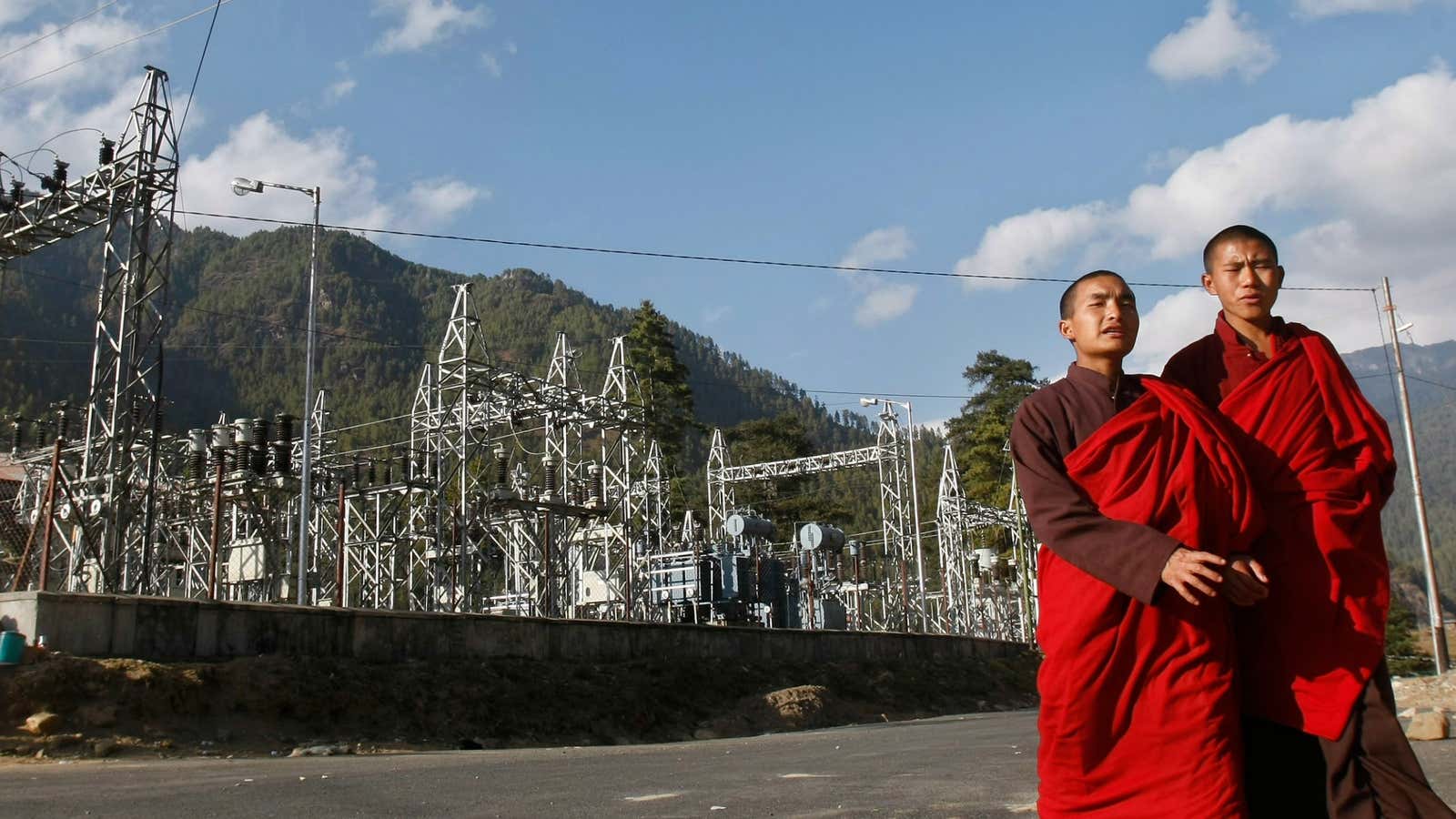It’s known as the Chicken’s Neck, a 30-odd km wide strip of land that connects mainland India to its seven northeastern provinces. To the north of this narrow swathe, lies Bhutan, surrounded on three sides by India—and beyond that China.
That strategic location has meant two things for Bhutan: The tiny landlocked country of less than 750,000 people has always held much strategic significance for India. And, that it can’t really get by without help from New Delhi.
But on July 13, when Bhutan, the youngest democracy in the world, held elections only for the second time in its history, it was amidst a period of unusual acrimony with its neighbor: the world’s largest democracy, India.
New Delhi recently withdrew crucial energy subsidies to Bhutan, leading to prices of kerosene and cooking gas spiralling in the Himalayan nation. Speculation was rife that this could be a rebuke to Bhutan after its former Prime Minister Jigme Y. Thinley met former Chinese premiere Wen Jiabao in Brazil last year.
India makes no apologies for dominating the country’s foreign policy on the basis of a 1949 treaty, despite a 2007 revision that’s given the Bhutanese greater control over their external affairs.
“Some say that, on July 13, it will not be the people of Bhutan but the world’s largest democracy that could win the elections in the world’s youngest democracy,” read a recent editorial in Bhutan’s Kuensel newspaper.
Yet, India is also Bhutan’s largest trade and development partner, and has helped build everything from cement and hydroelectric plants to an airport, a broadcasting station and highways there.
In 2009, energy-starved India agreed to buy 10,000 MW of power from Bhutan by 2020, alongside providing loans to build the 10 hydroelectric projects in the country’s fast-moving mountain rivers.
10,000 MW of renewable power is significant. It’s the sort of generation that US solar power producers are just about reaching now, and Bhutan can potentially produce over twice as much.
But the substantial earnings that these projects are expected to bring to Bhutan’s exchequer could be spent in settling the huge Indian loans that will be accumulated; and it’s only normal in these parts to expect construction delays and cost escalation.
There are other fears: The projected cost of some of these hydro-power installations, including the under-construction Punatshangchu I project, is larger than Bhutan’s total gross domestic product (GDP). The risks, therefore, cannot be ignored.
Nonetheless, in a country that has seen its GDP grow by over 9% last year, and per capita income rise from $1,750 in 2008 to $2,420 last year, such calls for slowing down aren’t often heeded, especially with a growing neighbour like India that is hungry for electricity.
Maybe that’s why Thinley’s Druk Phuensum Tshogpa (DPT) party, accused by some of fraying relations with India, was swept aside in the recent elections. And new Prime Minister Tshering Tobgay will not only have to assuage New Delhi, but ensure that Bhutan can sustain its growth momentum without damaging its modest economy. That, though, could be a chicken-and-egg problem.
